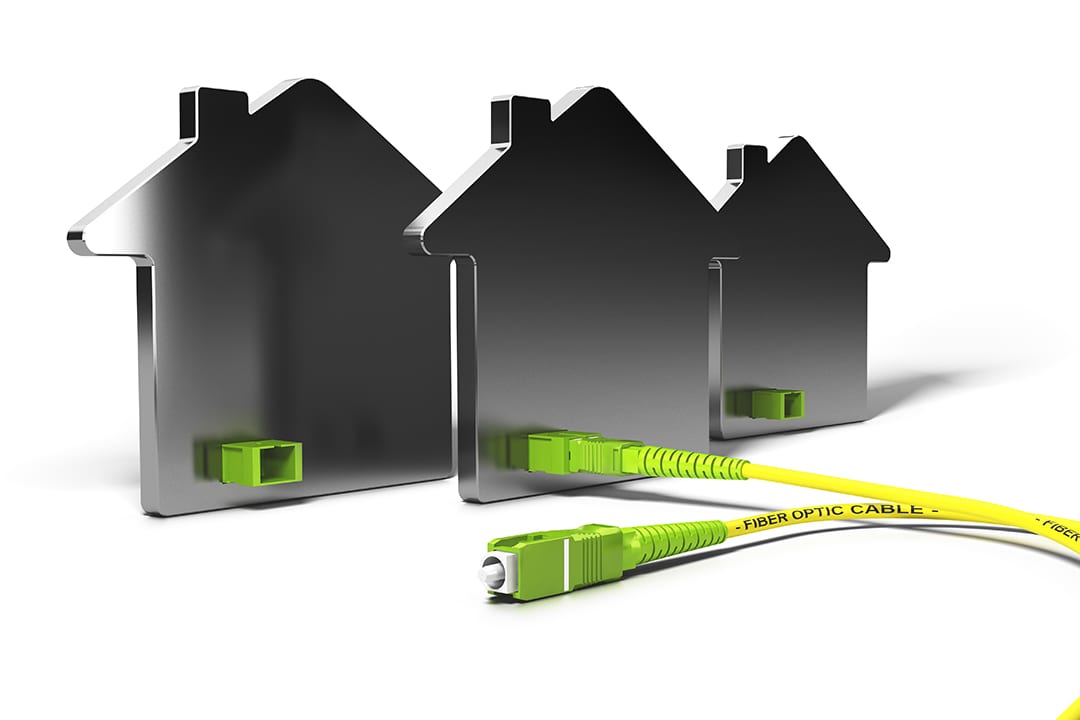Fiber to Your Home

In 2012 Google Fiber launched in Kansas City creating a Fiber to the Home (FTTh) network unlike anything consumers had seen before. The service offered increased bandwidth and high speeds (for uploads and downloads) for each resident – with entertainment driving the need for reliable internet. The success generated from Google Fiber shows FTTh deployment is achievable and accessible for cities when the design is right.
Flash-forward to 2020 and the needs of society have changed once again. Mass amounts of people are working, learning and streaming from home – highlighting the need for reliable and fast broadband once again. Video based products such as Zoom, Teams and Google Hangout have become a necessity, allowing work to be accomplished without ever leaving your home. However, some individuals face issues with video connectivity and quality – have a colleague with a frozen screen? They just might be in an area with poor broadband. Additionally, multiple users in a household are consuming data at the same time straining even the more robust networks.
However, we did not need a pandemic to tell us we needed FTTh. Cord cutters are still on the rise and streaming services such as Youtube, Hulu with Live TV and Sling TV have taken cable’s place. It’s not just streaming services though; smart homes have evolved from more than just an Alexa device. Our lights, thermostats and speakers are at our fingertips taking precious broadband capacity. FTTh could allow each individual home to gain the higher bandwidth capacity it desires and needs.
In a global crisis such as Covid-19, the need for fiber is crucial. Fiber allows individuals to connect online with family members and friends, stay current with the news and most importantly power the economy. In situations where citizens are forced to stay at home and businesses shift online how we stimulate the economy is through our networks. A strong internet connection allows us to shop online, make payments and earn money.
City of Springfield, MO Rolls out FTTh Network
BHC provided engineering services to facilitate the design, construction and implementation of a FTTh network in Springfield, MO connecting more than 113,000 residents with highspeed internet access. Geographic Information System (GIS) analysts performed address validation and construction ride-out efforts for the fiber design to assess constructability and accuracy of the design.
In order to finance the expansion, the City of Springfield leased part of the Springnet network to Century Link for 15-years. The system has additional dark fiber installed to be potentially leased to other internet providers and businesses. Construction of the network is planned to be completed in phases – ending in the fall of 2023.
To Deploy or Not to Deploy?
Now is the time to deploy a FTTh networks. The technology is established, engineers possess the skills, contractors are capable, and capital can be attained. With Google Fibers program currently halted cities are now tasked with the do it yourself (DIY) mentality. Cities should feel confident deploying FTTh networks given the expertise of consultants in the market.
Communities
Communities looking for solutions for fiber connectivity should consider:
- Public-private options that can utilize infrastructure incentives to attract a competitive fiber provider.
- Communities served by an electric co-op can consider the utility lease back model referenced for Springfield, Missouri.
- Options may exist to partner a competitive internet service provider with a carrier who provides fiber connectivity to the local school district to add a FTTh component.
BHC can help communities assess the options for bringing fiber and competition to their communities.
Carriers
Carriers looking to serve a community, or to grow their business should consider:
- Communities where the incumbent is not investing in updated infrastructure creating market opportunity.
- Access to capital funds that are looking for long term investments in broadband service cash flow.
- Public-private partnerships where public incentive in infrastructure investment can close the financial gap.
- Partnership with electric co-ops who may not want to operate a consumer communications network.
BHC can provide an initial step, and that is a high-level network plan that includes budget level information to develop your business plan. We can then get that plan to construction, and to revenue generating service.
Conclusion
BHC has been deploying fiber for 28 years across the United States. We understand the importance of providing a critical resource to a community currently underserved. This game changing network will allow individuals the capability to work/learn/entertain from home without sacrificing quality, connectivity and bandwidth. Contact Matt Brungardt for more information.
